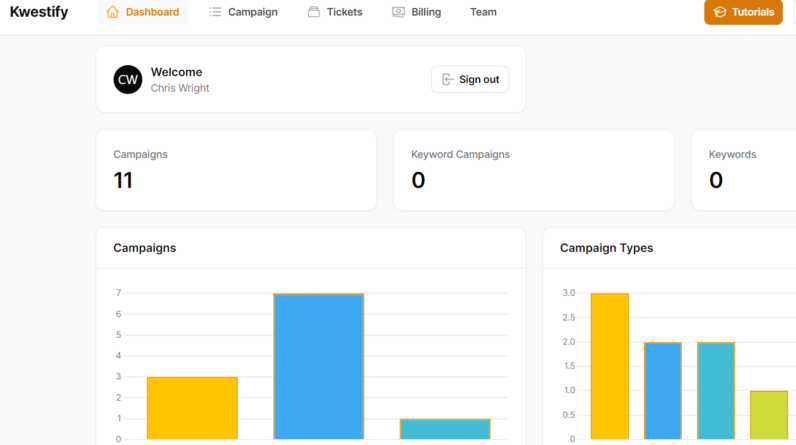
In this article, we will discuss effective strategies to promote your affiliate marketing website and boost traffic. You will learn creative ways to attract more visitors, increase your visibility, and ultimately improve your chances of generating revenue. From leveraging social media platforms to optimizing your website for search engines, we will explore various techniques that can help you succeed in the competitive world of affiliate marketing. So, if you’re looking to take your website to the next level and drive more traffic, keep reading to discover some valuable tips and ideas.
Using SEO to Boost Website Traffic
Keyword research and optimization
One of the most important factors in improving website traffic for your affiliate marketing website is to have effective keyword research and optimization. You need to identify the keywords that your target audience is using to search for products and services related to your niche. This will help you optimize your website content and increase your chances of getting found by search engines.
To start with, brainstorm a list of keywords that are relevant to your affiliate products. Then, use keyword research tools like Google Keyword Planner, SEMrush, or Moz Keyword Explorer to get insights into search volume and competition for those keywords. Look for long-tail keywords that have a decent search volume but lower competition.
Once you have a list of target keywords, strategically place them in your website content, including your titles, headings, meta descriptions, and throughout the body of your articles. However, be careful not to overdo it and stuff your content with keywords – this can actually harm your SEO efforts. Focus on creating high-quality, valuable content that naturally incorporates the keywords.
On-page SEO techniques
In addition to keyword optimization, there are several on-page SEO techniques that you can implement to improve your website’s visibility in search engines. These techniques include optimizing your website’s URL structure, using descriptive alt tags for images, improving your website’s loading speed, and ensuring proper internal linking.
Having a clean and user-friendly URL structure is crucial for both search engines and visitors. Use descriptive keywords in your URLs instead of lengthy strings of numbers or random characters. For example, instead of www.yourwebsite.com/product1234, use www.yourwebsite.com/product-name.
Images are an important part of any website, but they can also have a negative impact on your website’s performance if not optimized correctly. Make sure to include alt tags for all your images, using relevant keywords to describe the image. This not only helps search engines understand what the image is about but also improves accessibility for visually impaired users.
Website loading speed is another important factor for both SEO and user experience. If your website takes too long to load, visitors are more likely to leave and search engines may penalize your site. Optimize your website’s loading speed by compressing images, minimizing code, and using caching plugins.
Finally, proper internal linking can help search engines understand the structure and hierarchy of your website, as well as improve user navigation. Make sure to include relevant internal links throughout your content, linking to relevant pages on your website. This not only helps with SEO but also encourages visitors to explore more of your content.
Link building strategies
Link building is an essential aspect of SEO that involves getting other websites to link to your affiliate marketing website. High-quality inbound links not only bring direct traffic but also signal to search engines that your website is authoritative and trustworthy.
There are several strategies you can use to build quality backlinks. One effective method is guest blogging, where you write articles for other websites in your niche and include a link back to your own website in the author bio or within the content. Reach out to relevant blogs and offer to contribute valuable content that aligns with their audience’s interests.
Another strategy is to collaborate with influencers or industry experts who have a strong online presence. By partnering with them to create valuable content, you can leverage their audience and earn backlinks to your website. This could involve publishing an interview, co-authoring an article, or creating a joint webinar or video.
Additionally, you can explore broken link building, where you find broken links on other websites and offer to replace them with your own relevant content. This not only helps the website owner fix a broken link but also provides an opportunity for you to gain a valuable backlink.
Don’t forget about internal linking as well. Linking to other relevant pages within your own website helps search engines understand the structure of your site and improves user navigation.
Utilizing Social Media Platforms
Creating engaging content
Social media platforms offer a great opportunity to promote your affiliate marketing website and increase traffic. However, simply sharing links to your website won’t be enough to attract attention. You need to create engaging content that resonates with your target audience and encourages them to take action.
Start by understanding your audience demographics and preferences. This will help you tailor your content to their interests, thereby increasing the chances of engagement. Use a mix of different content formats such as images, videos, and infographics to keep your social media feed diverse and interesting.
When creating content, focus on providing value to your audience. Share tips, advice, and insights related to your niche that can help them solve a problem or achieve a goal. This positions you as an authority in your industry and encourages trust from your audience.
Leveraging social media advertising
While organic content is important, social media advertising can significantly boost your website traffic and reach a wider audience. Social media platforms like Facebook, Instagram, and Twitter offer various ad formats and targeting options to help you reach your ideal audience.
When setting up social media ads, make sure to define your target audience based on demographics, interests, and behaviors. This will ensure that your ads are shown to the right people who are more likely to be interested in your affiliate products.
Use compelling ad copy and visuals that catch attention and spark curiosity. Highlight the benefits of your affiliate products and include a clear call-to-action (CTA) to encourage users to click through to your website.
Collaborating with influencers
Influencer marketing has become a powerful tool for promoting products and services. Influencers have built a loyal following based on their expertise and credibility in a specific niche. By partnering with influencers who align with your industry and target audience, you can tap into their reach and influence to drive traffic to your affiliate marketing website.
Start by identifying influencers in your niche who have a strong following and engagement. Look for influencers who have an authentic voice and whose values align with your brand. Reach out to them with a personalized pitch, highlighting how a collaboration can benefit both parties.
Influencer collaborations can take various forms, such as sponsored posts, product reviews, guest blog posts, or even hosting joint giveaways. Make sure to track and analyze the results of these collaborations to assess their effectiveness and identify areas for improvement.
Implementing Email Marketing Campaigns
Building an email list
Email marketing still remains one of the most effective ways to reach your target audience directly and drive traffic to your affiliate marketing website. Building an email list allows you to nurture and engage with your subscribers, providing them with valuable content and special offers.
Start by including opt-in forms on your website where visitors can subscribe to your email list. Offer an incentive such as a free e-book, a discount code, or exclusive access to valuable content, in exchange for their email addresses.
Additionally, you can promote your email list on social media platforms, through guest blogging, or by participating in industry-related forums and communities. The key is to provide value and make it clear why someone should join your email list.
Crafting effective email newsletters
Once you have built an email list, it’s important to craft effective email newsletters that grab subscribers’ attention and encourage them to take action. Keep your newsletters concise and engaging, and make sure to include a clear call-to-action (CTA) in each email.
Segment your email list based on subscribers’ interests, demographics, or purchase behavior. This allows you to personalize your emails and provide content that is relevant to each subscriber’s needs and preferences. For example, if you have different categories of affiliate products, you can send targeted emails to different segments highlighting relevant products or offers.
Experiment with different types of emails, such as product updates, blog roundups, special promotions, or even personalized recommendations. Monitor the performance of each email to see what resonates best with your audience and adjust your email marketing strategy accordingly.
Segmenting and personalizing emails
Segmenting your email list and personalizing your emails can significantly improve the effectiveness of your email marketing campaigns. Instead of sending generic emails to your entire list, segmenting allows you to send targeted messages to specific groups of subscribers.
Consider segmenting your list based on factors such as location, gender, purchase history, or engagement level. This enables you to create more relevant content and offers that are tailored to each segment’s preferences and needs.
Personalization goes beyond using the subscriber’s name in the email. Use the data you have collected to customize the content and recommendations in each email. For example, if a subscriber has previously purchased a certain product, you can suggest related products or offer exclusive discounts on similar items.
Utilizing Content Marketing
Creating valuable blog posts
Content marketing is a powerful strategy for driving traffic to your affiliate marketing website and establishing yourself as an authority in your niche. By consistently producing valuable blog posts that address your target audience’s pain points and provide solutions, you can attract organic traffic and build a loyal following.
Start by identifying the topics and keywords that are relevant to your niche and have high search demand. Use keyword research tools to find long-tail keywords that have a decent search volume but lower competition. Incorporate these keywords into your blog post titles, headings, and throughout the content.
When writing your blog posts, focus on providing in-depth and actionable information. Dig deep into the topic and provide valuable insights that your audience won’t find elsewhere. Use subheadings, bullet points, and images to make your content scannable and easy to read.
Additionally, encourage engagement and interaction with your blog posts by including a call-to-action (CTA) at the end, such as asking readers to leave a comment, share the post on social media, or sign up for your email list.
Producing informative videos
Videos have become one of the most popular forms of content consumption, and incorporating them into your marketing strategy can help improve your website traffic. Create informative and engaging videos that provide valuable insights, tutorials, or product reviews related to your affiliate products.
Start by brainstorming video ideas that align with your niche and audience’s interests. Consider what problems your audience might be facing and how you can provide solutions through video content. You can create how-to videos, product demonstrations, industry news updates, or even interview industry experts.
When producing your videos, pay attention to the quality of both the content and production. Invest in a good camera, microphone, and lighting equipment to ensure that your videos are clear and professional. Use editing software to add captions, graphics, and transitions that enhance the viewing experience.
Finally, make sure to optimize your videos for SEO. Use relevant keywords in the video titles, descriptions, and tags. Include a link to your affiliate marketing website in the video description to drive traffic. Also, promote your videos on social media platforms and embed them in relevant blog posts to maximize their reach.
Optimizing content for sharing via social media
Creating valuable and shareable content is key to driving traffic to your affiliate marketing website through social media platforms. When your audience finds your content valuable and informative, they are more likely to share it with their own followers, amplifying its reach.
To optimize your content for social media sharing, consider the following tips:
- Make your content visually appealing: Use high-quality images, infographics, or videos to catch attention and make your content more shareable.
- Use catchy headlines and captions: Craft attention-grabbing headlines and captions that pique curiosity and encourage users to click and share.
- Include social sharing buttons: Make it easy for users to share your content on social media platforms by including social sharing buttons on your website or blog.
- Share across multiple platforms: Don’t limit yourself to just one social media platform. Share your content across multiple platforms to reach a wider audience.
- Engage with your audience: Respond to comments and messages on social media, and actively participate in discussions related to your content. This helps build relationships and encourage more sharing.
Remember to monitor the performance of your shared content and learn from what resonates best with your audience. This will help you refine your content strategy and create more shareable content in the future.
Engaging in Affiliate Partnerships
Finding reputable affiliate programs
Partnering with reputable affiliate programs is essential for the success of your affiliate marketing website. There are numerous affiliate programs available, but not all of them are trustworthy or offer fair commission rates.
Start by researching the affiliate programs that are relevant to your niche and have a good reputation. Look for programs that align with your audience’s interests and offer products or services that are high-quality and valuable.
Pay attention to the commission rates offered by each program. While higher commission rates may seem attractive, also consider the conversion rates and average order value associated with the products. It’s important to strike a balance between higher commissions and products that are likely to convert.
Additionally, take into consideration the payment terms and methods offered by the affiliate programs. Some programs may have a minimum threshold for payment, or they may have a longer payment processing time. Make sure these terms align with your financial goals and expectations.
Negotiating higher commission rates
Once you have established a successful partnership with an affiliate program, it’s worth considering negotiating higher commission rates. If you have been consistently driving traffic and generating sales for the program, you may have leverage to ask for better commission terms.
Before entering into negotiations, gather data and evidence that demonstrate your value as an affiliate. This could include traffic statistics, conversion rates, or customer feedback. Prepare a pitch that highlights the benefits of increasing your commission rate and how it aligns with the mutually beneficial relationship.
When negotiating, be professional and confident in presenting your case. Focus on the value you bring to the program and how a higher commission rate would incentivize you to continue promoting their products. Be willing to compromise and consider other non-monetary benefits that could be offered in lieu of higher commissions, such as exclusive offers or increased exposure.
Building strong relationships with affiliates
Building strong relationships with your affiliate partners is crucial for long-term success in affiliate marketing. When you have a good working relationship with your affiliates, they are more likely to provide you with valuable resources, exclusive offers, or opportunities for collaboration.
Start by communicating regularly with your affiliates. Stay in touch and provide updates on your progress, new content you have created, or any upcoming promotions. This helps keep them informed and engaged, and shows that you are actively promoting their products.
Additionally, consider reaching out to your affiliates proactively and offering to help promote their content or products. This reciprocity can strengthen the relationship and encourage them to reciprocate by promoting your affiliate marketing website.
Ask for feedback and suggestions from your affiliates on how you can improve your promotional efforts. They may have valuable insights or ideas that can help you optimize your strategies and drive more traffic. Remember, building strong relationships with your affiliates is a two-way street, so be willing to provide support and assistance when needed.
Leveraging Influencer Marketing
Identifying influencers in your niche
Influencer marketing has gained significant traction in recent years, with influencers becoming powerful voices in various industries. By partnering with influencers who have a strong following and influence in your niche, you can tap into their audience and drive traffic to your affiliate marketing website.
Start by identifying influencers who are relevant to your niche and align with your brand values. Look for influencers who have engaged and active audiences, as well as a genuine interest in the topics and products related to your affiliate marketing website.
Use social media platforms and influencer marketing platforms to find potential influencers. Look for influencers who consistently produce high-quality content, have good engagement rates, and have a loyal and dedicated following. Pay attention to the types of content they create and the audience they attract to ensure they align with your target audience.
Establishing partnerships with influencers
Once you have identified potential influencers, it’s time to establish partnerships and collaborations. Influencer partnerships can take various forms, depending on your goals and the influencer’s preferences. Here are a few ideas to consider:
- Sponsored content: Pay the influencer to create content that promotes your affiliate products. This could be in the form of a dedicated post, a mention in their Instagram story, or a product review on their blog.
- Guest blog posts: Collaborate with the influencer to create a guest blog post for their website. This allows you to tap into their existing audience and drive traffic back to your affiliate marketing website.
- Social media takeovers: Allow the influencer to take over your social media accounts for a day or create content specifically for your platforms. This can generate excitement and engagement among your followers, as well as expose your brand to the influencer’s audience.
- Co-branded campaigns: Create joint marketing campaigns with the influencer, where you both promote a specific product or offer. This allows you to leverage each other’s audience and reach a wider audience.
When approaching influencers, make sure to personalize your pitch and highlight how a collaboration can benefit both parties. Offer something of value, such as a free product sample or an exclusive discount code, to incentivize the influencer to work with you.
Tracking and analyzing influencer campaigns
As with any marketing strategy, it’s important to track and analyze the performance of your influencer campaigns. This allows you to assess the effectiveness of your partnerships and identify areas for improvement.
Start by setting clear goals and objectives for your influencer campaigns. Do you want to increase website traffic, generate sales, or simply raise brand awareness? Make sure to track relevant metrics that align with your goals, such as clicks, conversions, or engagement rates.
Use tracking links or unique discount codes to attribute traffic and conversions to specific influencers or campaigns. This helps you identify which partnerships are driving the most traffic and generating the highest return on investment.
In addition to tracking quantitative metrics, also pay attention to qualitative feedback from influencers and their audiences. Monitor comments, direct messages, and mentions related to your affiliate marketing website. This can provide valuable insights into the sentiment and impact of your influencer partnerships.
Investing in Paid Advertising
Running targeted ads on Google Ads
Google Ads is a powerful advertising platform that allows you to target specific keywords, demographics, and locations. By running targeted ads on Google, you can increase your website traffic and reach a wider audience that is actively searching for products or services related to your affiliate marketing website.
Start by conducting keyword research to identify relevant keywords that have high search volume and low competition. Use these keywords to create compelling ad copy that encourages users to click and visit your website.
When setting up your Google Ads campaigns, define your target audience based on demographics, interests, and previous search behavior. This ensures that your ads are shown to the right people who are more likely to be interested in your affiliate products.
Regularly monitor and optimize your Google Ads campaigns by analyzing the performance of keywords, ad copy, and landing pages. Use A/B testing to test different variations and see which ones perform best in terms of click-through rates and conversions. Adjust your budget and bidding strategy based on your goals and the performance of your campaigns.
Advertising on social media platforms
In addition to Google Ads, social media platforms like Facebook, Instagram, and Twitter offer powerful advertising tools to boost your website traffic. These platforms have detailed demographic and interest targeting options, allowing you to reach your ideal audience.
When setting up your social media ad campaigns, define your target audience based on demographics, interests, and behaviors. Use compelling visuals and copy that catch attention and spark curiosity. Include a clear call-to-action (CTA) that encourages users to click through to your affiliate marketing website.
Experiment with different ad formats, such as image ads, video ads, or carousel ads, to see which ones resonate best with your audience. Monitor the performance of your ads and make adjustments based on click-through rates, engagement rates, and conversions.
Retargeting campaigns for improved conversions
Retargeting is a powerful advertising strategy that allows you to reach users who have previously visited your website but did not convert. By displaying targeted ads to these users as they browse other websites or social media platforms, you can increase the chances of bringing them back to your affiliate marketing website and converting them into customers.
Set up retargeting campaigns by placing a tracking pixel on your website that captures data about users who visit your site. This data is then used to identify those users on other websites or platforms where you can display retargeting ads.
When creating retargeting ads, make sure to offer something of value to entice users to return to your website. This could be a special discount, a free e-book, or exclusive access to valuable content. Use compelling visuals and copy that remind users of their previous visit and provide a clear call-to-action (CTA).
Monitor the performance of your retargeting campaigns and make adjustments based on click-through rates, conversion rates, and return-on-investment. Experiment with different ad formats, audience segmentation, and ad frequency to find the optimal retargeting strategy for your affiliate marketing website.
Applying Email Opt-in Strategies
Offering incentives for email sign-ups
Building an email list is crucial for driving traffic to your affiliate marketing website, and offering incentives for email sign-ups can significantly boost your opt-in rates. People are more likely to provide their email address if they perceive value in return.
Consider offering a valuable incentive, such as a free e-book, a discount code, or exclusive access to premium content, in exchange for email sign-ups. Make sure the incentive is relevant to your audience and aligns with the interests of your potential subscribers.
Place opt-in forms prominently on your website, such as in the sidebar, on your homepage, or as pop-ups. Clearly communicate the benefits of joining your email list and highlight the value they will receive by subscribing.
Additionally, leverage other channels to promote your email list and incentives. Use social media platforms, guest blogging, or participation in industry-related forums and communities to reach a wider audience and attract more email sign-ups.
Using exit-intent pop-ups
Exit-intent pop-ups are a powerful tool for capturing email sign-ups from visitors who are about to leave your website. These pop-ups are triggered when a user’s mouse moves towards the close button or navigation bar, indicating their intention to leave.
Exit-intent pop-ups can provide a last-minute opportunity to engage with visitors and offer them an incentive to stay connected. Consider offering a special discount, a content upgrade, or exclusive access to valuable resources in exchange for their email address.
When designing exit-intent pop-ups, make sure they are visually appealing and attention-grabbing. Use concise and compelling headlines and copy that clearly communicate the benefits of joining your email list.
However, be cautious not to interrupt or annoy visitors with excessive or intrusive pop-ups. Set the triggers and display frequency of exit-intent pop-ups carefully to ensure they enhance user experience rather than detract from it.
Designing attractive opt-in forms
The design of your opt-in forms plays a crucial role in encouraging visitors to subscribe to your email list. An attractive and user-friendly opt-in form can significantly improve your opt-in rates and drive more traffic to your affiliate marketing website.
Start by designing opt-in forms that are visually appealing and aligned with your brand. Use high-quality images, icons, and color schemes that catch attention and create a positive impression. Make sure the design is consistent with your website’s overall aesthetics and theme.
Keep your opt-in forms simple and easy to fill out. Only ask for the essential information, typically just a name and email address. Lengthy or complicated forms can deter visitors from subscribing.
Consider using form validation to provide real-time feedback and assist users in filling out your opt-in forms correctly. This can help reduce form abandonment and improve the overall user experience.
Finally, make sure to include a clear and compelling call-to-action (CTA) button. The CTA should communicate the value of joining your email list and encourage visitors to take action. Use persuasive copy such as “Join now and receive exclusive offers” or “Get access to valuable resources”.
Analyzing Website Performance
Tracking website analytics
Analyzing website analytics is essential for identifying opportunities to improve your website’s performance and increase traffic. By tracking key metrics and understanding user behavior, you can make data-driven decisions to optimize your website and drive more visitors to your affiliate marketing website.
Start by setting up Google Analytics or other similar analytics tools to collect data about your website’s traffic, engagement, and conversion rates. Pay attention to metrics such as total visits, unique visitors, bounce rates, time on site, and conversion rates.
Analyze the sources of your website traffic to identify which channels are driving the most visitors. This could include organic search, social media referrals, paid ads, or direct traffic. This information helps you understand which marketing efforts are most effective and where you should allocate more resources.
Dig deeper into user behavior by analyzing the pages users visit, the time they spend on each page, and the actions they take on your site. This helps you identify which pages are performing well and which areas need improvement.
Regularly review your website analytics and use the insights gained to make data-driven decisions. This could involve optimizing underperforming pages, refining your content strategy, or adjusting your marketing tactics.
Utilizing heatmaps for user behavior analysis
Heatmaps are powerful visual tools that allow you to understand how users interact with your website. By analyzing heatmaps, you can identify which areas of your website receive the most attention, which sections are being overlooked, and how users navigate your site.
Heatmaps provide insights into user behavior such as scrolling patterns, click rates, and cursor movement. This helps you understand which parts of your website are attracting attention and where users are focusing their attention.
Based on the insights gained from heatmaps, make data-driven decisions to improve the user experience and optimize your website for better engagement. For example, if a heatmap reveals that users are clicking on non-clickable elements, you can make those elements clickable or provide alternative options that fulfill their expectations.
There are several heatmap tools available that allow you to track user behavior. Some popular options include Crazy Egg, Hotjar, and Mouseflow. Choose a tool that best fits your needs and budget, and regularly analyze your heatmap data to inform your website optimization efforts.
Conducting A/B testing
A/B testing, also known as split testing, allows you to compare two different versions of a webpage or element to determine which one performs better in terms of conversions or engagement. By conducting A/B tests, you can continuously improve your website and optimize it for increased traffic.
Start by identifying the areas of your website that you want to test, such as headlines, call-to-action (CTA) buttons, landing page layouts, or forms. Create two different versions of the element you want to test, with only one variable changed between the two.
Randomly split your website visitors into two groups, with one group seeing version A and the other group seeing version B. Monitor the performance of each version, tracking metrics such as click-through rates, conversion rates, or engagement rates.
Analyze the results of your A/B tests to determine which version performed better and why. Use these insights to guide your future website optimizations and continuously improve your website’s performance.
Remember to only test one variable at a time to ensure accurate results. Testing multiple variables simultaneously can make it difficult to determine which specific change led to the observed differences in performance.
Conclusion
Promoting your affiliate marketing website and improving traffic requires a combination of strategies and ongoing monitoring and adaptation. By implementing effective SEO techniques, leveraging social media platforms, utilizing email marketing campaigns, engaging in affiliate partnerships and influencer marketing, investing in paid advertising, optimizing email opt-in strategies, analyzing website performance, and continually improving the user experience, you can successfully drive more traffic to your affiliate marketing website and increase your chances of success. Remember to always focus on providing value to your audience and building strong relationships with your target audience, influencers, and affiliate partners. Consistency and continuous improvement are key to achieving long-term growth and success.









